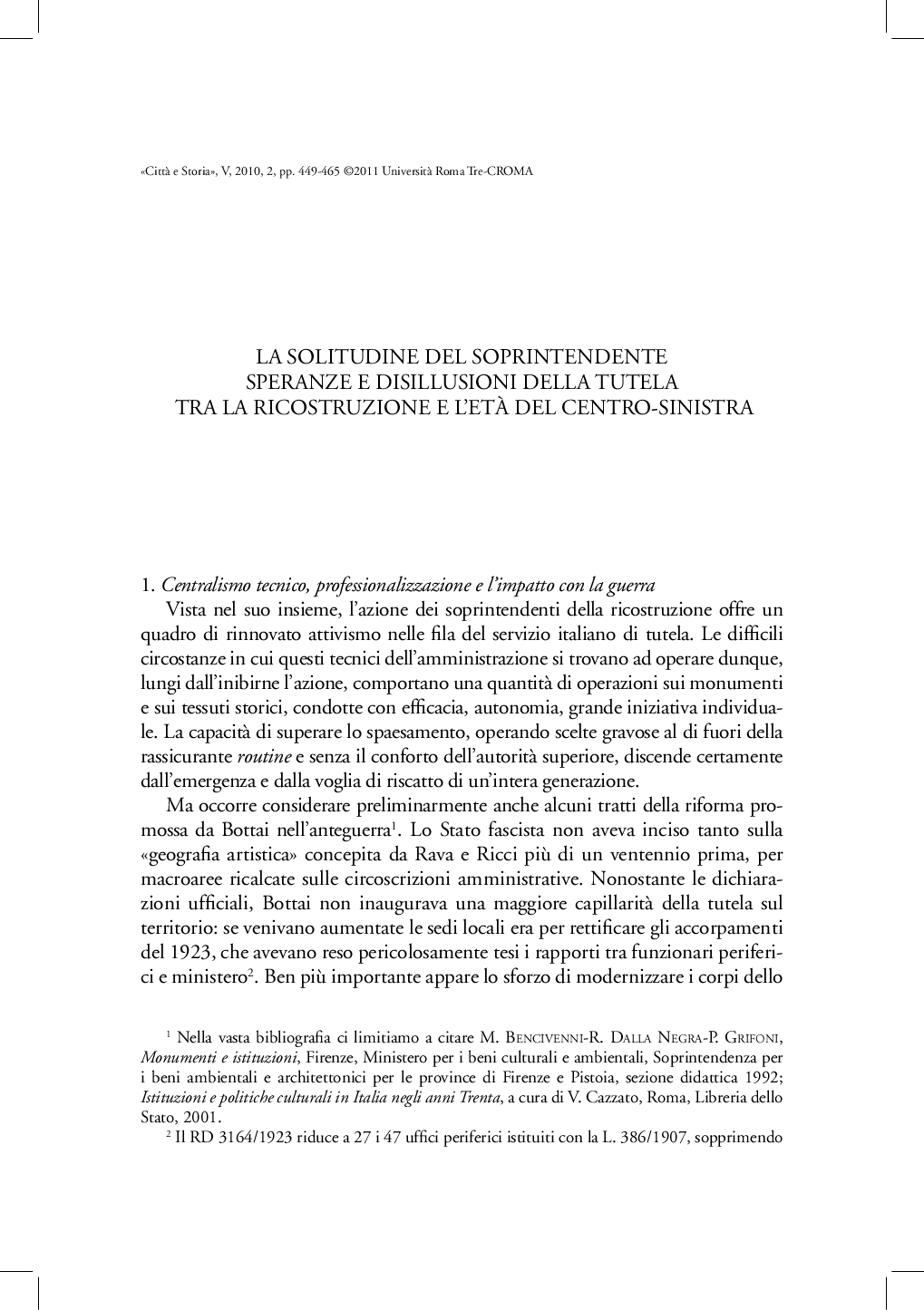Indice dei fascicoli
CITTÀ & STORIA » 2010/2 » Burocrazie tecniche
ISSN 1828-6364
Morgante Michela
La solitudine del soprintendente. Speranze e disillusioni della tutela, tra la ricostruzione e l'età del centro-sinistra
pp.449-465, DOI 10.17426/49208
Articoli
Abstract: This article describes the decline of the model for a professional Superintendent of Monuments as imposed by the Bottai reform in the 1930s. After the Second World War, local bureaucracies seemed to react positively, relying on resources such as personal involvement, individual responsibility and a sense of belonging to an administrative elite. Paradoxically, the decline of the image of the officials occurred during its most glorious era, during the exceptional post-war reconstruction period. Isolated in unknown geographical areas with very little technical means, low incomes and slow career advancement, officials found themselves losing this sense of affiliation and status in an unending vicious circle of failure, low social approval and lack of effectiveness in the territory. Authority and credibility faded in fields such as building control which were increasingly difficult to manage in a atmosphere of greater urgency. With the central leftists in power, a new ethical pact was formed that brought together authorities and communities which aimed at greater sensibility of heritage values on a broader level.

Referenze
- download: n.d.
- Url: http://archivio.centroricercheroma.it/?contenuto=indice-dei-fascicoli&idarticolo=956
- DOI: 10.17426/49208
- citazione: M. Morgante, La solitudine del soprintendente. Speranze e disillusioni della tutela, tra la ricostruzione e l'età del centro-sinistra, "Città & Storia", V/2, pp.449-465, DOI: 10.17426/49208

